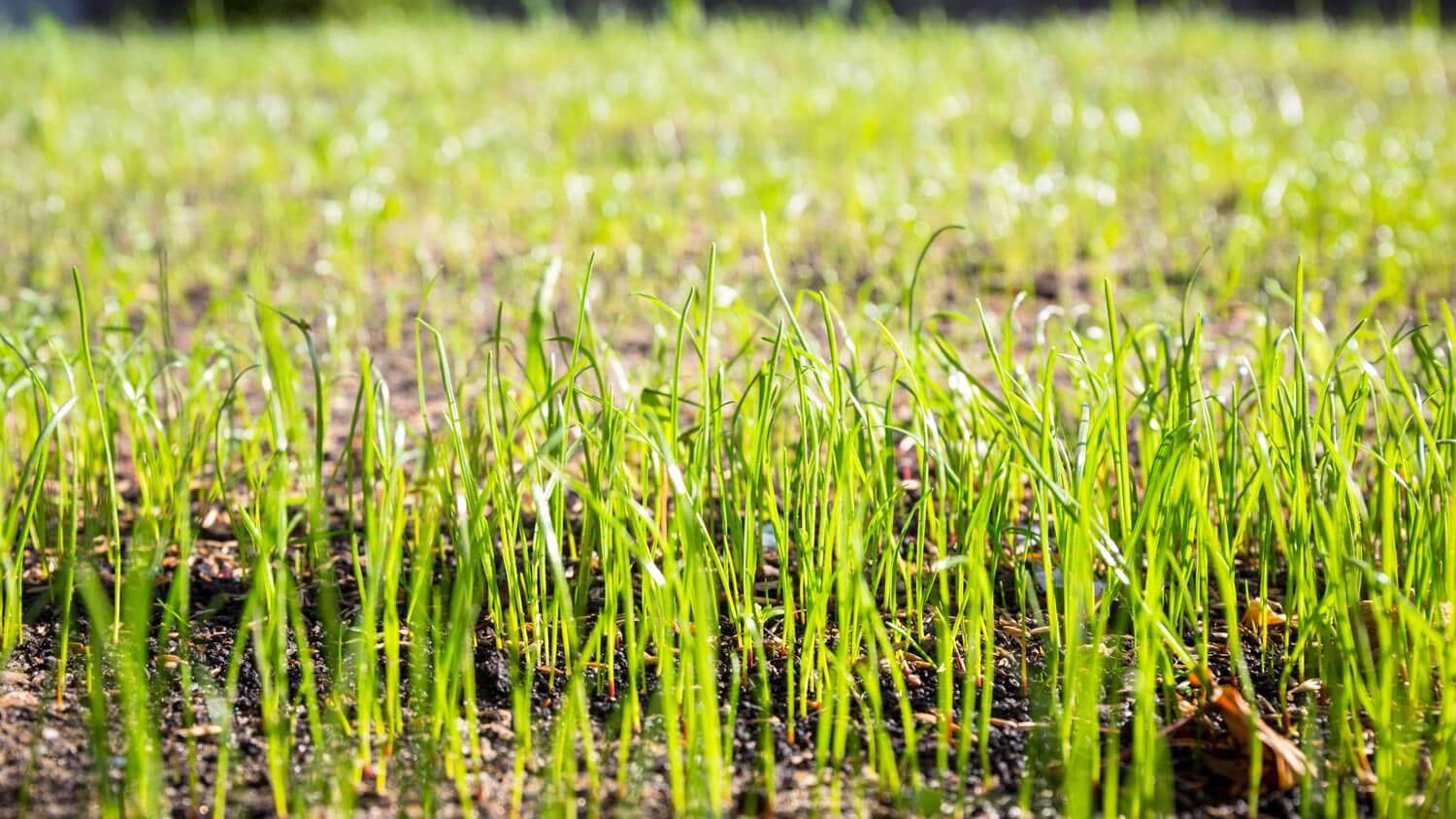Will Grass Grow in Potting Soil?
Here’s the dirt on what happens when you plant grass seeds in potting soil


You’ve got a bald spot or two showing on your lawn, and you’re ready to throw down some seed to patch it. And thanks to your budget houseplant obsession, you’ve got some potting soil on hand. But will grass seed really grow in potting soil? This guide will explain why you can’t use potting soil to grow grass and what to use instead.
Can You Grow Grass in Potting Soil?
The simple answer is no, outdoor grass will not grow in potting soil. Potting soil is best for planting indoor grasses or plants in pots or containers. Instead, you should use topsoil to grow grass in your lawn or other outdoor areas.
What Happens When Grass Grows in Potting Soil
Potting soil isn’t actually dirt. It has perlite, peat, sphagnum moss, and vermiculite added to ensure proper drainage. This is important in pots because it keeps plants and their roots from getting waterlogged. But because of these additions, potting soil does not retain moisture, making it difficult for grass seeds to make the deep roots they need to thrive.
That’s not the only problem with trying to grow grass in potting soil. Because of all the added materials, there are very few nutrients. Potting soil is sterile, which is good for indoor plants because it prohibits fungus. But outdoors, it won’t retain any nutrients, in part because water leeches through it so quickly, taking what little nutrients there are with it. Grass will not thrive without rich nutrients in your garden soil. Eventually, grass growing in potting soil will die off. No amount of coaxing will convince it.
Can Potting Soil Ever Be Used for Grass Seed?
The only type of grass seed to grow in potting soil is cat grass. You sometimes see this for sale in small pots at pet stores, or you can buy the seed there in bulk. Cat grass seed can be barley, rye, or wheat seeds, or a mixture of all three, and is perfectly safe for your pet. In fact, it’s good for their digestion.
This type of seed does well in small pots in light potting soil. It has a short life span, but luckily it sprouts within a week so that you can keep growing new batches for your kitties.
Pro tip: Two to three weeks before Easter, line an Easter basket with plastic (make a few drainage holes) and fill it with potting soil. Plant cat grass seed and water regularly. By Easter, you’ll have an Easter basket full of fresh grass instead of the plastic stuff.
What Soil Is Best for Growing Grass?

The best soil for growing grass is a well-balanced, compost-rich garden soil that provides plenty of nutrients for your lawn throughout the growing season. If you are going to reseed a lawn (especially a mostly-dead lawn), you will want to till the soil and add a mixture of compost, mulch, and garden soil to create the best growing conditions. Or, use garden soil that has added compost and manure.
Test your soil in early spring to see what type of PH balance it has. Generally speaking, you want a PH level between 5 and 7.
Adjust your amendments based on the current needs: your soil may be either too acidic or too alkaline. Acidic soil can balance out with lime; alkaline soil can balance out with a sulfate.
If you have sandy soil, amend the soil with manure, compost, or leaf mulch.
If you have clay soil, amend the soil with a rich mix that includes some peat, compost, and mulch. Work this deep into the ground and regularly aerate to avoid compaction.
Most bagged garden soil contains some compost, manure, and other enriching materials, but you can mix in additional compost to make richer soil.
Topsoil is not the same thing as garden soil. Topsoil is literally the top layer of soil and contains very few nutrients. It works best to fill in landscape beds; don’t use it where you want to plant anything.
Plant the Right Kind of Grass Seed
Just as important as choosing the right kind of soil is selecting the right type of grass seed for your growing conditions. For example, Bermuda grass is a warm-season grass, so it thrives in Southern climates and sunny conditions; Kentucky bluegrass is a cool-season grass and can bounce back after cold Midwestern winters.
Keep your lawn up by following a lawn maintenance checklist that includes watering, mulching in the fall, and properly fertilizing. If you think your lawn needs an intervention, contact a local lawn care specialist to repair and maintain your little patch of grass.

